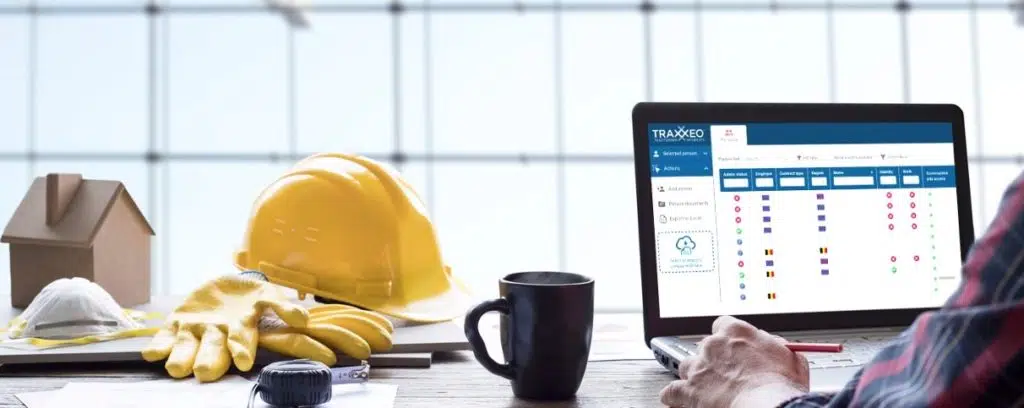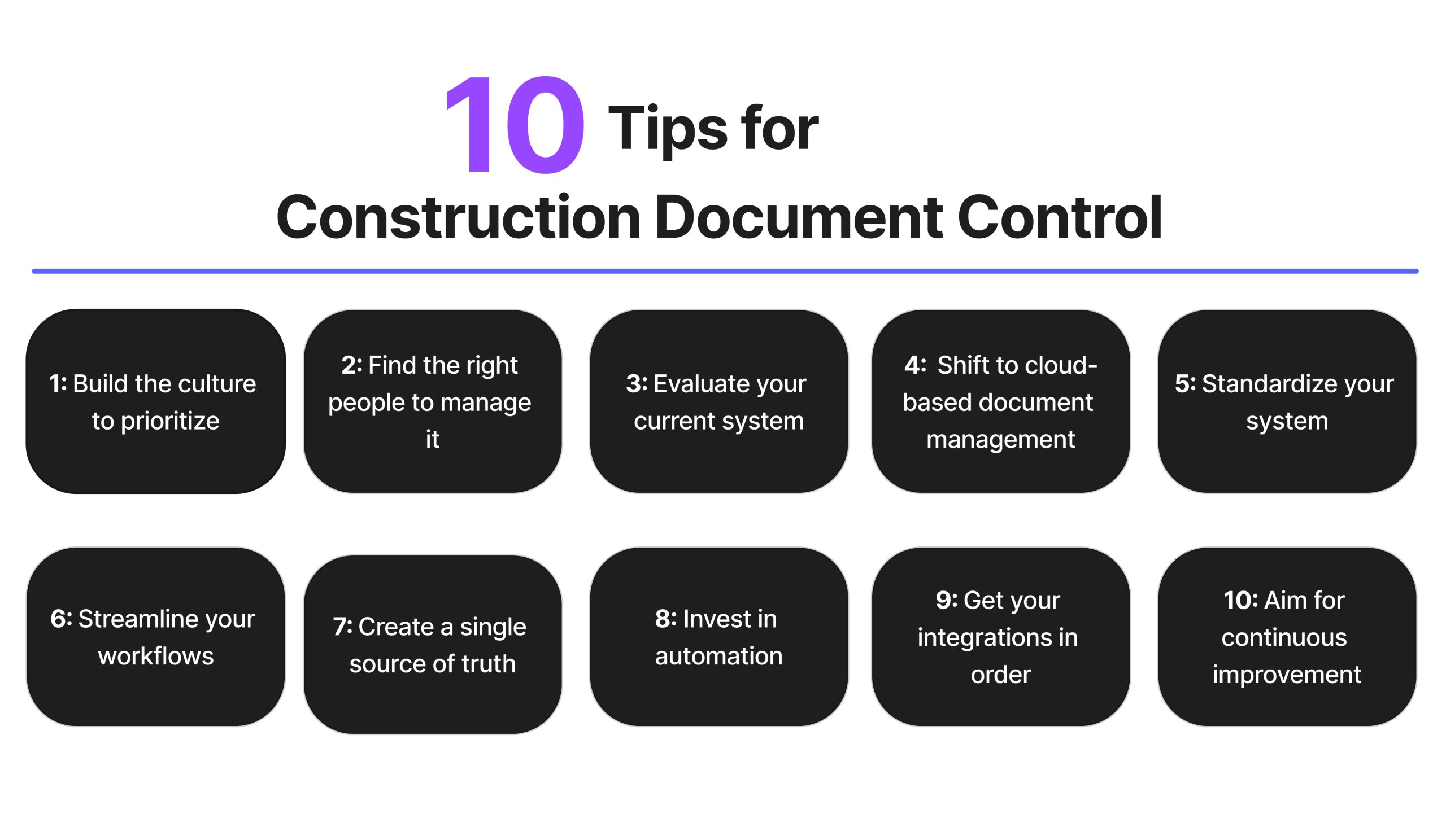Reliable Construction Document Management Solutions for Every Project
Reliable Construction Document Management Solutions for Every Project
Blog Article
Enhancing Process Efficiency: Architect's Specialist Methods for Construction Record Monitoring
In the world of architectural style and building and construction, the meticulous management of files stands as a cornerstone for job success. These methods not just make sure smooth task development but likewise hold the crucial to opening improved efficiency and accuracy in the complex world of building record monitoring.
Trick Document Organization Methods
When handling building papers, one of the essential methods that architects employ is establishing a systematic and reliable organization system. This system commonly entails classifying papers based upon their type, such as drawings, specifications, contracts, and allows. By developing clear and distinct groups, engineers can swiftly find particular information when required, conserving time and reducing errors in the construction procedure.
Within each classification, engineers even more arrange papers by making use of or creating subfolders numbering systems to signify variations or modifications (construction document management). This ordered framework ensures that the most appropriate and existing information is quickly available while keeping a document of modifications made throughout the project timeline
Moreover, architects frequently make use of digital file monitoring platforms that use functions like keyword search functions, variation control, and access constraints to improve organization and collaboration among job stakeholders. These devices enhance the paper retrieval process, promote real-time updates, and facilitate seamless interaction, eventually adding to the overall success of the construction project.
Collaborative System Assimilation
To enhance file administration effectiveness in building and construction projects, engineers perfectly incorporate collaborative platforms to enhance communication and streamline sychronisation among job stakeholders. By leveraging collaborative platforms such as task management software program, cloud-based storage space systems, and communication tools, designers can develop a central center for all project-related documents and interaction channels. These platforms allow employee to accessibility, evaluation, and collaborate on files in real-time, reducing hold-ups and the threat of errors related to conventional paper monitoring methods.
Collaborative system integration also promotes transparency and responsibility within the job group, as all stakeholders have visibility into the most recent job updates and modifications. By systematizing interaction and document sharing, architects can make sure that all group participants are working from the most up-to-date details, lessening the possibilities of misconceptions or problems occurring because of out-of-date files.
Furthermore, collective platforms make it possible for smooth cooperation in between designers, professionals, customers, and various other project stakeholders, advertising a more reliable and cohesive project workflow. By breaking down interaction barriers and assisting in information exchange, engineers can drive performance and innovation in building and construction tasks, ultimately leading to successful job results.
Variation Control Finest Practices
Executing effective version control methods is crucial for preserving paper precision and consistency in construction projects. By developing a clear system for managing alterations, project groups can make sure that everyone is working from one of the most updated documentation, decreasing the risk of mistakes and disparities during the building phase.
One of the crucial finest techniques for version control is to assign unique identifiers to each paper version. This can be achieved by utilizing a numbering system or day stamp that clearly indicates the order of alterations. By plainly identifying each iteration, team members can conveniently track the development of the file and determine one pop over here of the most recent version.

Automation Devices for Performance

File control software application, like Procore or PlanGrid, streamlines job paperwork, making it easily accessible to all stakeholders. These systems permit for real-time partnership, variation control, and automated backups, protecting against information loss. Additionally, Structure Info Modeling (BIM) software automates the generation of construction drawings and makes sure that modifications are integrated throughout all related records.
Incorporating automation devices with cloud storage remedies better boosts availability and protection. By automating the document administration procedure, task teams can focus their time and initiative on value-adding activities, eventually improving productivity and job outcomes.
Secure Information Management Solutions
Efficiently securing and taking care of task data is vital in the building and construction market to guarantee discretion and integrity throughout the task lifecycle. Architectural companies can use encrypted cloud storage space solutions to firmly share and save task papers with licensed personnel.
Furthermore, utilizing electronic civil liberties administration (DRM) devices adds an added layer of safety and security by avoiding the unapproved distribution or replication of task documents. Normal data backups are important to reduce the risk of information loss as a result of unpredicted situations like equipment failures or cyber-attacks. Collaborative platforms with integrated safety attributes allow seamless interaction and data sharing amongst project staff member while maintaining information stability.
Conclusion
In conclusion, carrying out vital document company strategies, integrating collaborative systems, practicing version control best methods, using automation devices, and adopting secure information management remedies are crucial strategies for enhancing workflow effectiveness in construction file monitoring. These expert methods hop over to these guys can improve procedures, improve communication, make sure precision, and preserve data protection throughout the building and construction job lifecycle.
In the world of architectural design and construction, the careful administration of records stands as a keystone for task success. These techniques not just ensure smooth job development but also hold the vital to unlocking enhanced efficiency and accuracy in the elaborate realm of building document monitoring.
To optimize paper administration efficiency in building and construction tasks, engineers seamlessly integrate joint platforms to boost interaction and enhance sychronisation among task stakeholders. These platforms allow group participants to access, testimonial, and work together on papers in real-time, minimizing delays and the danger of mistakes connected with typical record management methods.
Using automation tools in building record management significantly improves effectiveness and enhances processes for project teams. construction document management.
Report this page